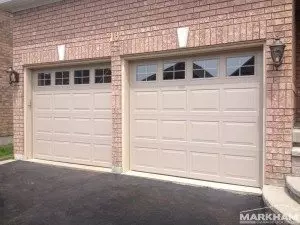
On a frigid January morning last winter, I found myself staring at my frozen garage door, coffee in hand, already running late for work. Like many homeowners in cold climates, I learned the hard way that a frozen garage door can quickly derail your entire day. Through that experience and extensive research, I've gathered comprehensive knowledge about handling this common winter challenge.
Understanding Why Garage Doors Freeze
The science behind a frozen garage door is relatively straightforward. When moisture meets cold temperatures, ice forms around the door's critical components. This can happen through snow and ice buildup at the base, moisture seeping through damaged weatherstripping, or even from humidity in the air condensing and freezing on metal parts. Cold temperatures also cause metal components like springs and tracks to contract, increasing friction and potentially leading to alignment issues.
Prevention: Your First Line of Defense
The best solution to a frozen garage door is preventing it from freezing in the first place. During my years maintaining garage doors in the Midwest, I've found that regular maintenance makes all the difference. Start by keeping the area where the door meets the ground clean and dry. Remove snow and ice buildup regularly, especially in the morning when ice formation is most common.

Proper lubrication is crucial. Use silicon-based lubricants on moving parts, including tracks, hinges, and rollers. A common mistake I've seen many homeowners make is using WD-40, which isn't actually a true lubricant and can cause more problems in cold weather. Instead, opt for specialized garage door lubricants or silicon-based products.
Climate control plays a significant role in prevention. Consider installing a garage heater to maintain a warmer environment and use proper ventilation to control humidity levels. Some homeowners I've worked with have had great success with applying eco-friendly ice-melting products strategically around the door's base before severe weather hits.
Safe Thawing Methods
If prevention fails and you find your door frozen shut, don't panic. Start with a careful assessment of the situation. Check for visible ice buildup and listen for unusual sounds when attempting to operate the door. If you have an automatic opener, ensure the power source is functioning correctly.
For manual thawing, begin by disconnecting the automatic opener using the emergency release cord. This prevents potential damage to the motor. Using a plastic ice scraper, carefully chip away visible ice, working gradually from the edges inward. Never use metal tools, as they can damage the door or its components.

Heat application is often necessary but requires caution. Use a blow dryer or heat gun from 6-12 inches away, or apply warm (never boiling) water to the frozen areas. Once the ice is melted, thoroughly dry all affected areas to prevent refreezing. Pay special attention to the base where the door meets the ground, and apply fresh lubricant to prevent future issues.
Material Matters
Different garage door materials respond uniquely to cold weather. Steel doors generally offer excellent cold weather performance and resist moisture damage effectively. Wood doors provide natural insulation but require more maintenance and can be susceptible to warping. Vinyl and aluminum doors, while lightweight and easy to maintain, typically offer lower insulation values unless specifically enhanced.
When to Call a Professional
While many frozen door issues can be resolved with DIY methods, certain situations demand professional intervention. If you notice broken springs, snapped cables, significant door misalignment, or persistent operation problems after thawing, it's time to call an expert. During my time in the field, I've seen too many DIY attempts gone wrong, leading to more expensive repairs or even personal injury.
Long-term Solutions
Consider upgrading your door's insulation if you frequently experience freezing issues. Doors with an R-value of 14-16 are recommended for cold climates. Ensure proper drainage around your garage by maintaining correct grading and keeping gutters clean and properly directed.
Implement a regular maintenance schedule, inspecting door components monthly during winter and lubricating moving parts seasonally. Test the door's balance and operation regularly to catch potential issues before they become major problems.
By following these guidelines and maintaining proper care of your garage door system, you can significantly reduce the likelihood of dealing with a frozen door during winter months. Remember, prevention is always easier than dealing with a frozen door in the middle of a cold winter morning, and when in doubt, consulting a professional is always the safest choice.

